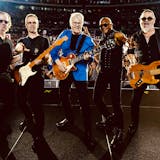Four months removed from the glow of Major League Baseball's All-Star Game, the economic benefits that the event was supposed to bring to Minnesota appear to have shrunk.
Meet Minneapolis, the city's tourism arm, had initially predicted the game would mean a $75 million boost for the local economy, but based on closer study has now revised the figure to $50 million. The state Department of Revenue, reviewing sales tax data for Minneapolis, added that the true figure could be as high as $55 million, or as low as $21 million.
Measuring the economic impact of signature sporting events like the Super Bowl and All-Star Game has always been an inexact science. For their analysis, state officials examined sales taxes that are charged on most goods and services, ranging from restaurant food to admission to sporting events to lodging and parking.
The All-Star Game's financial boost to the local economy takes on added relevance this week as Minneapolis awaits Friday's announcement on whether college basketball's Final Four tournament will soon be played at the Minnesota Vikings' new $1 billion stadium. Boosters of the event have said it will provide a noticeable economic impact. Jennifer Hathaway of the Minnesota Sports Facilities Authority said the economic impact for other Final Four host communities the past four years has ranged from $70 million to $200 million.
When Major League Baseball Commissioner Bud Selig announced in August 2012 that the All-Star Game was coming to Minnesota in 2014, one downtown Minneapolis civic leader predicted that the game could ultimately mean $110 million in economic benefit.
Since the game took place, neither Major League Baseball nor the Minnesota Twins has studied the extent of the local impact.
But Kevin Hanstad, Meet Minneapolis' director of market research, has crunched some numbers. It was Hanstad's $75 million figure that Selig used at his news conference.
"At the time, it seemed believable to me," Hanstad said of his original projection. Hanstad said he based his forecast in part on the estimated $60 million that the All-Star Game brought to Kansas City and St. Louis, though he added that those estimates were "loosey-goosey."



